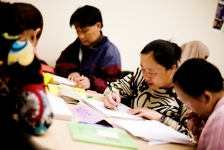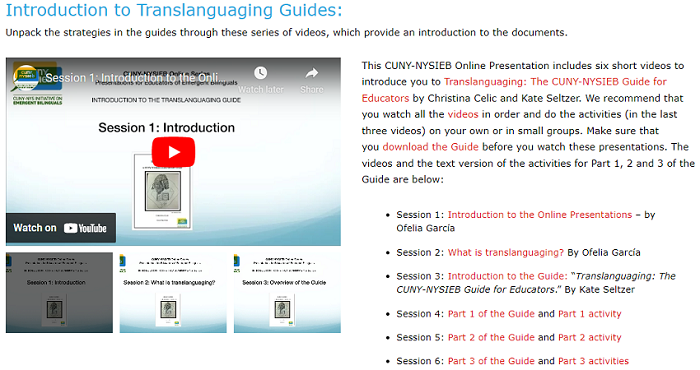- MN ABE Connect
- Archive
- New Resources Available in the Antiracism in ABE Library!
 May 19, 2023
May 19, 2023
New Resources Available in the Antiracism in ABE Library!
Cydnee Sanders, ATLAS Antiracism Library CuratorHey y’all! My name is Cydnee Sanders, and it’s time again to update you on the Antiracism in ABE resource library on our website, so let’s take a look at what’s new!
But first…
 What is the Antiracism in ABE resource library?
What is the Antiracism in ABE resource library?
The Antiracism in ABE resource library is one part of our larger Cultural Competency resource library. Our hope is that this library will be a useful resource for those working in the field of Adult Education to build on their knowledge and ability to implement antiracist practices, LGBTQ+ inclusion, and trauma-informed practices in their classrooms and programs.
Library structure and recent areas of focus
In order to help you find specific resources, the library is organized into several main topics, categories and subcategories. For example, under Antiracism in ABE you will find four categories, two of which have additional subcategories (click on the plus signs to expand them).
For the past year, we have been working to revamp the Antiracist Instruction category since we know teachers are looking for specific things to try in their classrooms. Though Antiracist teaching requires deep reflection and constant expansion of our knowledge of culturally responsive practices and how to recognize racism in education, we know it’s helpful to move theory into practice when we can see some examples too. Hopefully the new resources added will give you a place to start! Find out more about a couple of key new resources below.
Keep in mind that you can also search for resources by using the search function found at the top of all resource library pages. This search tool allows you to filter your results by several different criteria.
You can:
- choose from defined lists of Topics (tags) and Types (such as Classroom Activities, Lesson Plans, Videos, and so on);
- narrow your search to a specific library; and also
- search by keyword(s).
New resources of note
In keeping with our goal of tangible things teachers can use in the classroom, we’ve got a 2-for-1 bonus for you to start. In the library, we have previously shared resources from our colleagues at SABES in Massachusetts. The video called Culturally Responsive and Sustaining Teaching in Adult ESOL, which can be found in the subcategory Culturally Sustaining Practices, is another helpful resource from SABES which defines Culturally Responsive and Sustaining Teaching, in conjunction with Massachusetts’ ESOL Professional Standard 3.
 SABES provides a brief overview of the 5 key elements they use to break down CRST in order to assist educators trying to find more specific ways of implementing these practices in their classrooms. These 5 key elements include:
SABES provides a brief overview of the 5 key elements they use to break down CRST in order to assist educators trying to find more specific ways of implementing these practices in their classrooms. These 5 key elements include:
- Creating an inclusive and equitable environment
- Utilizing students’ identities as assets
- Implementing diverse perspectives and materials
- Including critical thinking, civic engagement and social justice
- Critically assessing one’s own biases and beliefs
The second part of the 2-for-1 bonus is the Flipgrid Companion, which is a companion to the video from SABES above. This Flipgrid article gives more classroom examples of the 5 key elements of CRST as defined by SABES. This short guide should give plenty of ideas for educators to try (or to look more into) whether you are just starting this work or if you have been doing this work for a while. It might also reinforce that some of the work you are already doing is indeed CRST, but it gives you more grounding as to why the practice is imperative.
The next resource came from someone in our community who reached out to us and we thought it was a great addition to our library. This article is called What is Critical Race Theory?, and can be found in the Identifying Racism in Education subcategory.
For those looking for more information on Critical Race Theory, especially since it is mentioned in the news daily, take a look at this article. What truly is CRT? The author provides the definition and history of CRT while connecting it to our education system today. They also address myths surrounding CRT which cause many people to misunderstand its purpose in our classrooms.
 And the final addition is for those looking for more information on translanguaging. This impressive online collection called Translanguaging Guides can be found under the subcategory Translanguaging.
And the final addition is for those looking for more information on translanguaging. This impressive online collection called Translanguaging Guides can be found under the subcategory Translanguaging.
One of the leading institutions on translanguaging research and resources is CUNY-NYS. Their whole website is filled with resources, but this webpage brings readers specifically to some of the guides and videos they have made for educators. For those who have more time to dig through longer resources, start with this webpage which includes writing activities that center translanguaging.
Keep in mind that most research on translanguaging is still about k-12 schools, so be prepared to spend some time thinking about how to transfer these activities to your context. This site has lots of great resources, though, so we wanted to share! And feel free to peruse the rest of the extensive list of resources on their website!
Have a resource to recommend?
Resources are being continually added to this library, so if you have recommendations for resources or would like to see more resources in a particular area, please feel free to reach out to Cydnee with your suggestions at [email protected].
Have questions about navigating the ATLAS website?
Please contact Marisa at [email protected].
Newsletter Signup
Get MN ABE Connect—the official source for ABE events, activities, and resources!
Sign UpArticle Categories
- ABE Foundations/Staff Onboarding
- ACES/Transitions
- Adult Career Pathways
- Assessment
- CCR Standards
- Citizenship
- COVID-19
- Cultural Competency
- Digital Literacy/Northstar
- Disabilities
- Distance Learning/Education
- ELA
- Equity/Inclusion
- ESL
- HSE/Adult Diploma
- Listening
- Math/Numeracy
- Mental Health
- Minnesota ABE
- One-Room Schoolhouse/Multilevel
- Professional Development
- Program Management
- Reading
- Remote Instruction
- Science
- Social Studies
- Speaking/Conversation
- Support Services
- Teaching Strategies
- Technology
- Uncategorized
- Volunteers/Tutors
- Writing
